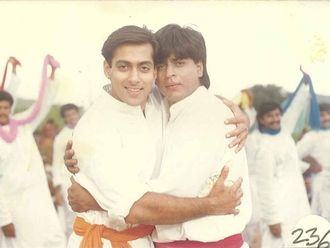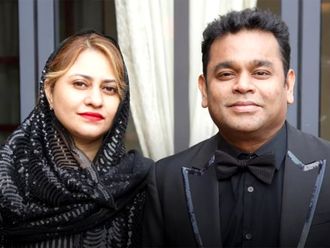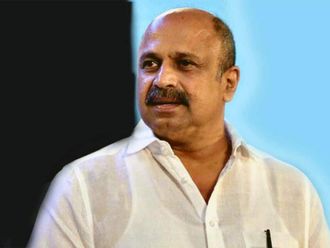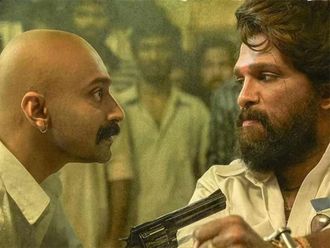
A Rebel and Her Cause — The Life and Work of Rashid Jahan
Women Unlimited, 248 pages, Rs395
Rashid Jahan wore a white khadi (handspun) sari at her wedding instead of a red embroidered satin sharara or gharara — standard bridal attire among wealthy Muslims of north India for as long as anyone can remember. Remarkably, after the nikah ceremony, Jahan broke into a dance to celebrate the all-important day in anyone’s life!
Jahan got married in Dehradun in 1934. In 1952 she died of uterine cancer in a Moscow hospital. Three words are engraved on the childless 47-year-old woman’s tombstone — communist, doctor and writer — summing up an extraordinary innings the sub-continent now barely remembers.
Rakhshanda Jalil’s new book throws a timely spotlight on the rebel who streaked like a meteor across the literary firmament in pre- and post-independence India. The slim volume packs in Jahan’s eleven short stories and two plays translated into English from Urdu, a poignant biography and critical assessment of the body of her work, besides rare black and white photographs of the trailblazing writer.
Salman Haider, former foreign secretary and Jahan’s nephew, has written a lively foreword recounting how his maternal aunt, “a gifted and committed individual”, was often tailed by plainclothesmen because she was a communist.
Born in an aristocratic family of Aligarh in 1905, Jahan studied in an all-girls school travelling to and fro in a palanquin draped with a sheet to reinforce the strictest of purdah. Later she enrolled at Lucknow’s Isabella Thoburn college before studying medicine at Lady Hardinge Medical College in Delhi to become one of the country’s first Muslim woman doctors.
Even as Jahan began her medical practice, she joined the Communist Party — then an underground political organisation the British government suspected of being in league with Russia.
Jahan burst on the literary scene in 1932 after her short stories were published in “Angarey” (Embers), an anthology of Urdu fiction by four writers in their twenties. Jahan was the lone woman in the quartet belonging to a progressive writers’ movement. Their no-holds-barred writings, particularly on religion, did not go down well with conservative Muslims. There were so many demonstrations against immoral “Angarey” that it was banned by the colonial administration.
Fanatics singled out Jahan for obvious reasons. They threatened to chop off her nose and ears. She was advised to hire bodyguards but she shrugged off ultimatums and merrily went about treating patients in government hospitals. A positive fallout of the Angarey scandal was that she and Mahmuduzzafar, one of the four contributors and a communist, fell in love and got married in 1934.
Jahan’s only book, “Aurat” [Woman], a collection of seven short stories, was published in 1940 when she was at the height of her creativity. Subsequently, she got so engrossed in her duties as a dedicated doctor and communist cadre that she barely got time to write. But she did contribute stories and plays to various journals as well as All India Radio.
Jahan started a new era in Urdu literature by writing about a woman’s body and rights. She tackled touchy issues blighting the zenana (female quarters) — lack of education, toll of early marriage, unplanned pregnancies and sexually transmitted diseases inflicted by wayward husbands. Outspoken but compassionate, she but did not stop at advocating change; her short hair, sari and blouse personified change.
Jalil, a well known translator and critic in her own right, says that Jahan’s objective was not to scandalise but to shock people out of their inertia and to expose hypocrisy and oppression that had crept into male-dominated everyday life. She has also mounted an exhibition of 30 photographs of Jahan discovered in a garage in Australia by a distant relative of her husband, Mahmuduzzafar.
Weekend Review spoke to Rakhshanda Jalil. Excerpts:
Why was your heroine called Rashid — a typically male name? I know three Rashids — a senior police officer, a mafia don and a classical singer — all men. I knew a Rashida, a fantastic cook who committed suicide because her husband — Rashid — refused to buy her silver ghungroos.
Rashid fared better! Her mother was Wahid Jahan. Her sisters had names like Khurshid Jahan. Such names were common in those days. But, yes, her friends did call her Rashida.
Why were you drawn to Rashid Jahan? Did she intrigue you? Is she an enigma you wanted to unravel?
I came across Rashid Jahan when I was working on my PhD on the Progressive Writers’ Movement (subsequently published under the title “Liking Progress, Loving Change: A Literary History of the Progressive Writers’ Movement in Urdu”, Oxford University Press).
She was one of the founding members of the PWM as well as the India People’s Theatre Association (IPTA) set up in 1943. Her name cropped up in passing, but it seemed that she was no more than an urban legend — more talked about than read or understood.
It occurred to me that the life of this remarkable woman needed to be studied and her work retrieved from oblivion and contextualised. The more I read her and tried to understand her contribution to progressive writing it seemed a pity that she had been reduced by literary historians to no more than a footnote in a larger history.
Was researching Rashid Jahan’s life and work problematic? Did you have to hunt for material or was it all there?
Rashid Jahan and her husband, Mahmuduzzafar were full-time members of the Communist Party of India. They had no children and their home was like a commune.
None of her original writings or papers could be found. All I had to go on were her own writings (slender though her output was), a few copies of the editorials and pieces she wrote for the Party’s paper that I located in the CPI Headquarters at Ajoy Bhawan, and testimonies of some of her contemporaries.
My mother, much younger than her, knew her and her reminiscences helped. While material on her life was limited, my previous research on the PWM helped. I had, in the past, spent a month at the British Library in London looking at intelligence files and the India Office Records which contained minute notes kept by the colonial administration on known communists.
As one of Urdu literature’s foremost living critics, how would you evaluate Rashid Jahan’s writings?
Well, I would hardly call myself a foremost living Urdu critic! But from what I understand of Urdu literature, I would say that Rashid Jahan was an exceptional writer.
She opened a space that no one knew even existed. She was a pioneer in the true sense — she wrote on subjects that no one had attempted before, such as women’s reproductive health, the effect of early marriage and frequent pregnancies on a woman’s body, the changing relationship between men and women in a society on the cusp of change as well as the new debates on nationalism, feminism, fascism and anti-imperialism and their effect on ordinary people.
What is more, in many of her stories she used language as a literary tool. She was the first writer to use begumati zubaan, the sort of colloquial, flavoursome Urdu spoken by women from sharif (respectable) families that had never been used by creative writers before.
After her, several others used it, most notably Ismat Chughtai but it must be remembered that Rashid Jahan was there first. She opened a door, so to speak, through which many others followed.
I liked “A Tour of Delhi”. It’s a very short short story but riveting — shades of O. Henry to be honest. Which is your favourite story or play and why?
I like “A Tour of Delhi” too; it is short and sharp. It is an early story and not in the least didactic or moralistic. I also like the two plays I have included in my book — “Behind the Veil” and “Woman” — because of their no-nonsense but extremely realistic portrayal of women in contemporary society.
I also like the story “She” because it so utterly revolutionary — it is about an encounter between a young school teacher and a woman suffering from syphilis. The very idea was shocking in the 1940s; even now it would be considered bold, even radical.
Do you think Rashid Jahan was ahead of her times? Would she have been better off writing today instead of the 1930s and 1940s?
Certainly, she was well ahead of her times — both as a writer and as a woman writer. In her choice of subjects, in her treatment of those subjects as well as her handling of the notoriety that came her way in her own lifetime.
The book to which she contributed “Behind the Veil” and “A Tour of Delhi” — a collection called “Angarey” where she along with three other young writers published their work — was banned in 1933. She received death threats and fatwas were passed against her and her fellow writers. She took it all in her stride and continued ploughing her own furrow — as a writer, as a doctor, as a communist, as a founder-member of PWA and IPTA.
I think she was needed in the 1930s and 1940s. If she hadn’t written the sort of stories she did, Urdu literature would have been much poorer. She made it possible for the next generation of woman writers — such as Ismat Chughtai — to take off as they did.
Do you know any living woman in India or Pakistan, famous or otherwise, Muslim or Hindu or Christian or Sikh, who reminds you of Rashid Jahan?
Taslima Nasreen comes to mind but she is a bad example. So, no, frankly, I cannot think of another creative writer who is in the same league as Dr Rashid Jahan in terms of her commitment to a certain ideology and worldview.
The foreword by former foreign secretary Salman Haider is quite interesting. Did you have to coax him or did he agree readily to reminisce about his aunt?
The Indira Gandhi National Centre for the Arts asked him and he agreed. My research was supported by the IGNCA.
Some people say Urdu is on its deathbed in India. How would you describe the state of Urdu in India today?
I am an optimist. I don’t believe those whose who say Urdu is dead or dying in India. Yes, it has shrunk in importance but there is still enough interest in Urdu literature and language. If nothing else, the film industry is keeping it alive! But more seriously, I think Indian publishing is supporting research-based books and translations from Urdu. I myself have published close to 20 books related to Urdu — edited volumes, translations of prose and poetry, critical writings, etc.
All my work has been published by major, mainstream English publishers. There must be an interest in Urdu for them to do so.
Is Urdu flourishing in Pakistan? How do the best Urdu Pakistani writers compare with their Indian counterparts?
The Urdu in Pakistan, especially the spoken Urdu, sounds cosmetic and laboured to me. It is becoming increasingly formalised. Among Pakistani writers of today, my all-time favourite remains Intizar Hussain. He is a master storyteller an unrivalled chronicler of the Partition and its effects. I also like Ali Akbar Natiq.
How has the response to the book and exhibition been so far?
The reviews so far have been very encouraging. A book on a woman such as Dr Rashid Jahan was waiting to be written. The exhibition ran in Delhi for 10 days and then travelled to Aligarh. In the months ahead it will travel to other cities associated with her life.
S.N.M. Abdi is a noted Indian journalist and commentator.








